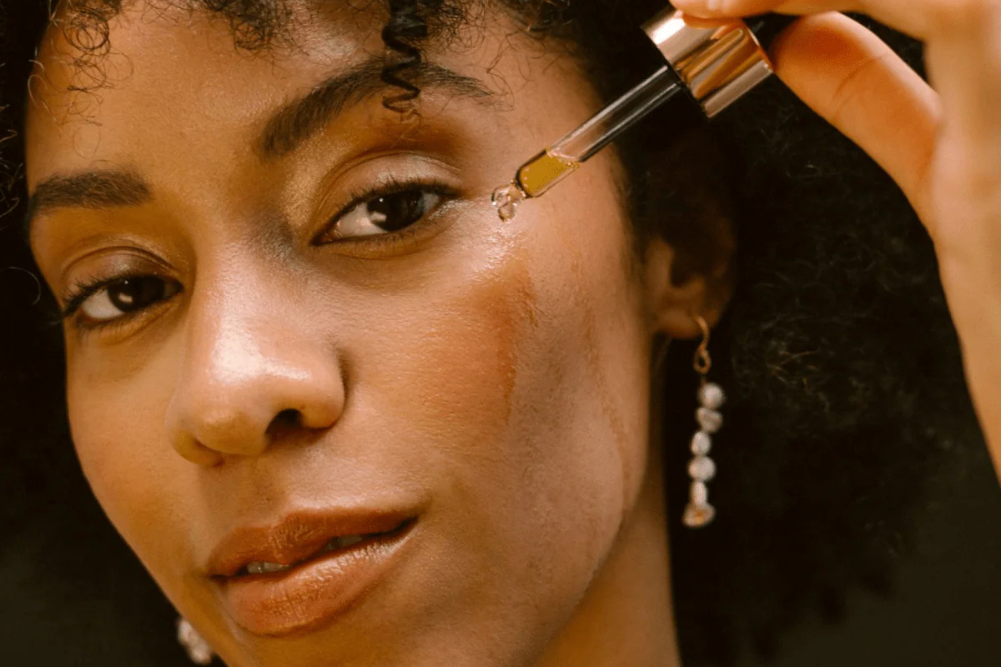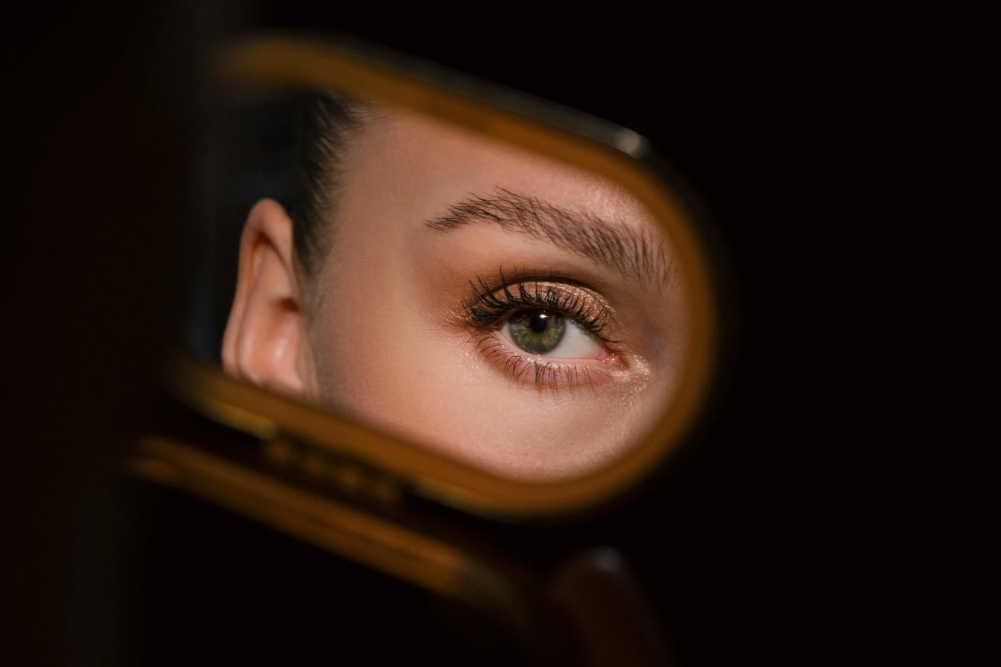Are synthetic fragrances good for your health? We take an in-depth look
If you’ve been fortunate to travel in more exotic destinations such as Egypt or Turkey, you may be familiar with perfume oils. There, store-holders in bright and bustling bazars offer a dazzling array of elaborate tiny bottles containing an unimaginable range of perfume oils and synthetic fragrances from an abundance of different plants.
But just what are those mysterious scented oils made from? What’s their provenance? Are there benefits to applying them as an alternative to modern solvent-based fragrances? Let’s take a look.
The basics
Perfume oils are made by taking flowers, woods, spices and other plant parts and distilling them using low heat and pressure. The steam, rich in fragrance oils, is collected over several weeks in a container that typically contains mild sandalwood oil, which acts as a base or fixative. The sandalwood oil binds with the fragrance oil molecules, allowing the scented oils to last much longer than if they were kept alone.
Within the industry, perfume oils are more commonly referred to as “attar oils”. The word attar or ittar that we use today is derived from the Arabic word for scent, which comes from the yet older Persian word Atr, meaning fragrance.
Materials for perfume making have been dated back as far as 5000 years in India and an early perfumer named Tapputi is mentioned in the cuneiform tablet dating to the second millennium.
Attar oils should not be confused with essential oils, which are obtained by steam distillation at higher temperatures. The higher heat can damage the delicate top notes of the oil, diminishing its fragrance. Essential oils are therefore useful for some medical purposes but are not generally used for perfumery. In addition, some people’s skin can react to certain essential oils, yet it’s extremely rare for skin to be sensitive to pure attar oils.
Attar oils should also not be confused with hydrosols or absolutes. A hydrosol is simply the water left over from the distillation process. It can be very useful but is generally not strong enough for use in perfumery. Absolutes are increasingly common and are created when the fragrant oil is extracted by a chemical-solvent process rather than simple distillation. The final product is quite different from and far less valuable than a pure attar oil.
A perfumed history
The art of perfumery is almost as old as civilisation itself. Materials for perfume making have been dated back as far as 5000 years in India and an early perfumer named Tapputi is mentioned in the cuneiform tablet dating to the second millennium in Mesopotamia. Royalty, such as the Mughal nobles of India, were some of the earliest known patrons of attar oils, and references to perfume formulas are even found in the Bible. In fact, a batch of surviving perfume found in Cyprus in 2004 is believed to be over 4000 years old, testifying to the longevity of attar oils.
Most popular perfumes only contain trace amounts of natural essences, or attar oils, within the fragrance blend. They usually also contain an average of 14 or more secret chemicals.
Fragrances were known to the ancient Chinese, Hindus, Egyptians, Israelites, Carthaginians, Arabs, Greeks and Romans. In fact, the word “perfume” is from the Latin per fumum, meaning “through smoke”.
Perfumery in each of these ancient civilisations meant the application of attar oils directly to the skin. In many Muslim countries, attar oils are still usually preferred over modern perfumes as many Muslims do not like to apply alcohol to the skin for religious reasons. Men in Egypt, Turkey and the Middle East still routinely apply attar oils after shaving, while women prefer their fragrance to big-brand solvent-based perfumes.
It was only when the perfume industry entered Europe that alcohol and other solvents began to become common additives to scents.
Perfumery was known in Europe from at least 1221, when it began to be recorded in Florentine monks’ recipes. By 1370, there are mentions in Hungarian texts of aromatic compounds being mixed with alcoholic compounds for Queen Elizabeth of Hungary. France became Europe’s perfume-making hub from 1500 onwards, and in the 19th century the extensive use of alcohol and other solvents gave birth to the modern perfume industry.
Fragrance or filler?
As the modern perfume industry grew, the concentration of attar oils in perfumes was gradually reduced and inexpensive fillers such as alcohol were increased in commercial products. When you buy a perfume product now, it may contain 3 per cent or less of the more expensive aromatic attar oils (see table below).
Why does the modern perfume industry dilute the active components of fragrant or attar oils in their perfumes? There are several reasons.
First, the alcohol causes some of the fragrant oils to evaporate more quickly. This gives a stronger fragrance for the first hour or so, which then quickly fades. This is an advantage when you’re testing perfumes in shops — but works against you if you’re hoping for a perfume that lasts all day.
What’s in a scent
Wondering how much scent your perfume contains? Here are some common perfume classes and their average concentration of fragrant oils.
| Name | Fragrant oil (%) | Alcohol & water (%) |
| Perfume or parfum | 15–30 | 70–85 |
| Eau de parfum | 8–30 | 70–92 |
| Eau de toilette | 4–8 | 92–96 |
| Eau de cologne | 2–5 | 95–98 |
| Splash cologne | 1–3 | 97–99 |
The second reason is, of course, cost. The attar oils are by far the most expensive part of any perfume, so using a large amount of commercially produced fillers allows far bigger profit margins. The larger bottles also allow shoppers to feel they’re getting better value for the high price they pay for some perfumes.
Third, as attar oil blends have been around since the dawn of civilisation and are natural plant-based derivatives, unique blends of them cannot be patented. Expensive brandnames on the other hand? Those can be trademarked, allowing a unique market for solvent-blended perfume products to be developed and protected.
A whiff of danger
There’s a number of disadvantages to the use of alcohol and other solvents in perfumes. As mentioned above, alcohol-based products evaporate more quickly, leaving just an illusion of longer-lasting perfume, so you either need to apply more or reapply it throughout the day.
Alcohol- and solvent-based perfumes also have a shorter shelf life of 6–18 months. As the 4000-year-old example above shows, attar oils can last quite a bit longer.
Further, alcohol or solvents can also cause problems for those with sensitive skin. Ethyl alcohol is the most popular alcohol to mix with perfume oils. Alone, it is extremely caustic. Many people believe they’re allergic to perfume but are, in fact, just reacting to the alcohol blended into the product. This can also be an issue for men using aftershave or cologne after shaving, contributing to razor burn and irritated skin.
Alcohol is also a drying agent and, as such, is usually avoided in beauty products as drying of the skin can increase wrinkle formation. This can become a problem where perfumed products are used across wide areas of the face, such as with aftershave or more liberal use of perfume for women.
It’s also important to understand that most popular perfumes contain only trace amounts of natural essences, or attar oils, within the fragrance blend. They usually also contain an average of 14 or more secret chemicals, some derived from petroleum products, that are not listed on the label. To protect trade secrets, makers are allowed to withhold fragrance ingredients, so customers cannot rely on the label to understand what their perfumes contain.
In the US, the Campaign for Safe Cosmetics commissioned a study several years ago that analysed 17 leading fragrances. They found 38 different secret chemicals, some of which are associated with hormone disruption, sperm damage and allergic reactions. Others have not been assessed at all for safety in personal-care products. Worst of all, some of these synthetic chemicals concentrate in human fat and breast milk, creating the potential for greater problems in future.
Chemical fragrances can also contribute to mild allergies like sneezing or watery eyes. More worryingly, they’re increasingly linked to dermatitis in some individuals. In more severe cases, chemical-contact dermatitis can trigger eczema, a chronic skin disorder marked by itchy rashes.
It’s estimated that one in 10 people in the US have ongoing allergic reactions to chemical elements in fragrances. Worse, however, is the estimated 2 per cent of the world’s population who are chemically intolerant. Chemical fragrances are considered a major contributor to this condition, which in worst-case scenario can lead to panic attacks and depressive disorders due to the difficulties of negotiating life while avoiding these ever-present chemicals.
So serious is the problem that, in 2007, “fragrances” won the dubious award of allergen of the year from the important industry magazine Dermatitis. More than 2800 fragrance ingredients are listed on the database of the Research Institute of fragrance materials; at least 100 are known allergens and new chemicals are frequently introduced.
What about attar oils?
In contrast, reactions to pure attar oils are extremely rare. You only need use a very small amount for a subtle fragrance that will last 12–24 hours, depending on your body chemistry. Unlike alcohol-based perfumes, attar oils also nourish the skin, preventing rather than causing the visible signs of ageing. Attar oils, in this way, could be thought of as anti-ageing perfumes or aftershaves.
If you’d like to try a natural attar oil blend as an alternative to a solvent-based perfume or aftershave, where do you start? Here are some key points to make the process easier:
- Healthfood shops sometimes stock small ranges of attar oils. If this is the case and you prefer to buy in this way, try to find someone who really knows the products. It’s not uncommon to accidentally buy essential oils or, worse, absolutes if you’re not given good guidance.
- Buying online can give you access to a much wider range of products and often more information. As always when buying online, make sure the supplier is one you feel you can trust.
- When reading descriptions, examine the top notes and notes of the fragrance in the same way you would a modern perfume. This is important even if you’re lucky enough to be browsing the products in a shop. You only want to try a couple at a time or your sense of smell will become confused, so hone in on ones you are likely to enjoy. Also, don’t try to use test strips of paper as is sometimes done when shopping for solvent-based perfumes — an attar oil blends with the unique fragrance of your skin so smells slightly different on each person. This is part of what makes them so personal and distinctive.
- Unsure which fragrance notes you generally prefer? Start by Googling your favourite solvent-based perfume or aftershave. The company’s website will usually list the key notes found in each fragrance. You can then use this as a guide to what you like.
- Sometimes, a seller of attar oils will have done some of this work for you and list the attar oil blend as “in the style of” a particular perfume brand. This can save you a lot of time and is worth seeking out.
When shopping, keep in mind that some attar oils may be in much smaller bottles and appear expensive for what they are. This is only because you need to use so little in comparison to a solvent-based perfume. In fact, you are undoubtedly receiving more of the fragrant oils that provide the actual fragrance.
Unlike alcohol-based perfumes, attar oils also nourish the skin, preventing rather than causing the visible signs of ageing.
Attar oils or perfume oils have many advantages over modern solvent-based perfumes. They provide a more natural and longer-lasting fragrance that is gentler on the skin. They remove the need for alcohol that dries and damages the skin and may contribute to visible signs of ageing. Plus, they don’t contain any unknown or dangerous chemical fragrances.
Once you experience the subtle, alluring fragrances of attar oil on the skin, it’s easy to become a convert. The only drawback may be smiling as you receive yet another expensive gift of solvent-based perfume you know you’ll never use.
How to use perfume oils
Applying an attar oil is slightly different from applying a modern commercial fragrance. Here’s how it’s done:
For women
- Take 1–2 small drops from the bottle and apply to the inside of each wrist.
- Before the oil dries, dab behind both earlobes.
- Unlike modern solvent-based perfumes, the fragrance will become stronger over several minutes as it dries and blends with the natural fragrances of your skin. Accordingly, the attar oil blend you use is a much more personal decision, as it needs to suit you rather than overpower your skin the way some solvent perfumes do.
For men
- After shaving, dab a small amount onto your palms. (Some attar oil bottles now come with pump-spray applications, making this easier.)
- Rub the oil in one smooth stroke across the face — there’s no need to massage it in.
- The oil won’t cause your face to sting as solvent-based aftershaves do, and won’t dry out the skin. In the long run, this may reduce signs of ageing associated with the application of alcohol to the skin.








